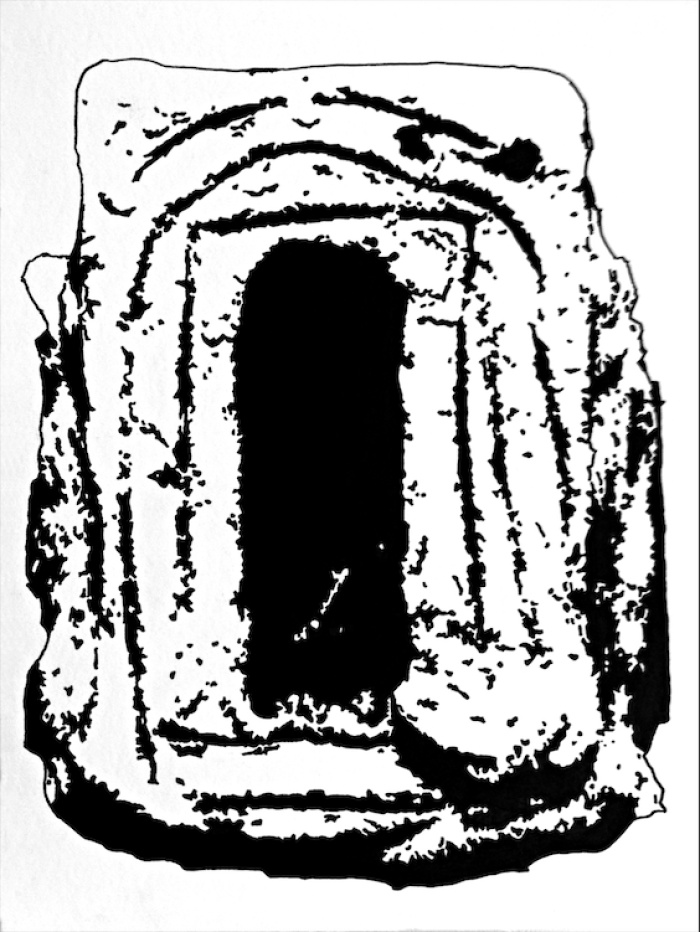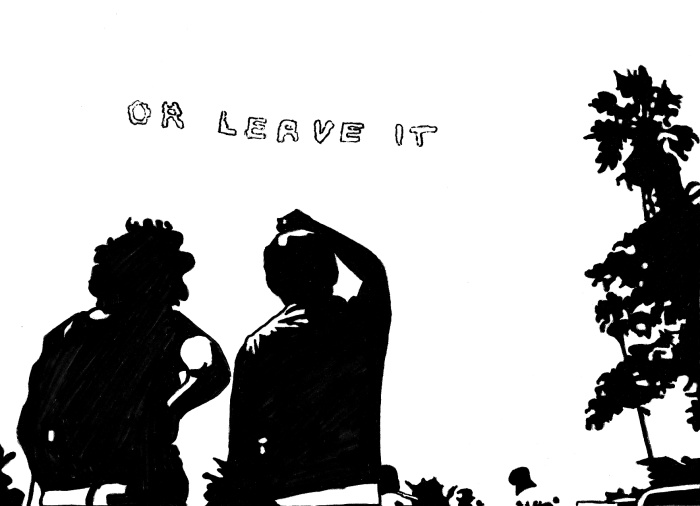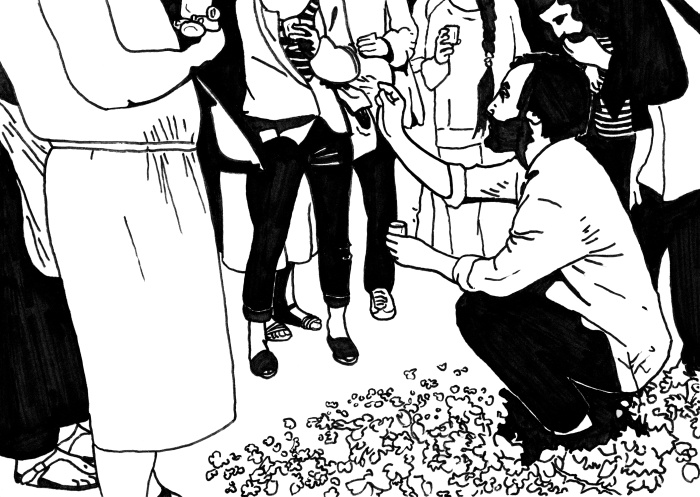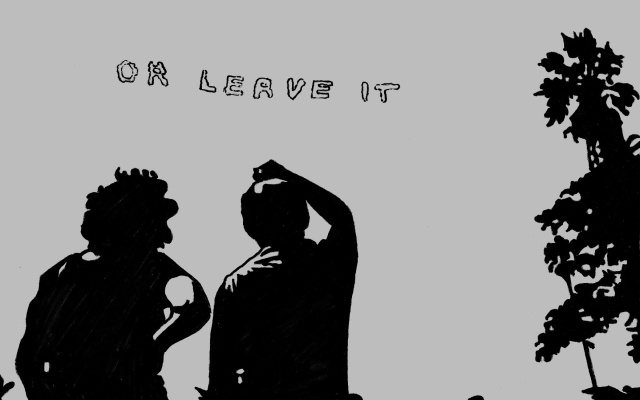In the beginning was the rhythm
Before the invention of writing, stories were passed from generation to generation by means of oral transmission. These stories conveyed traditional knowledge and societal values that served the community, preserving its identity through time. Recitation was employed as a mnemonic technique: repetition, rhythm, and rhyme were tools that enabled the performer not to lose track of his own narrative. When Sumerians, in a slow process that began around 8000 BC, invented that extremely familiar, yet odd technology that we know as writing, it wasn’t initially intended to express words or concepts, it was an accounting system, the indexical, physical proof of a transaction. It took many centuries before writing was committed to register names and ideas. The use for literature came even later. Some of the earliest written literary works, such as The Descent of Inanna and the Epic of Gilgamesh still retain redundancies and repetitions in their structure that feel out of place to a contemporary reader – traces that betray their origin as oral pieces transcribed into clay tablets.

Wrota do świata podziemnego „Inanna opuściła niebo i ziemie żeby zejść do świata podziemnego” (z Zejścia Inanny). Tusz na papierze, 40x30 cm, 2016
And the rhythm became silence and dwelt among us
The silent reader is a relatively recent invention. The first written texts were meant to be read aloud. Only a few had the ability to do it, and they made a living out of it by reading and writing for others. In the beginning was pause, no punctuation. The aloud reader had to practice the text prior to his performance in front of an audience. Those texts were a string of signs that conveyed sounds – no punctuation had yet been invented. Deciding on the end of a sentence and the beginning of another was a choice that the reader had to take beforehand and memorize for his public performance. It was only much later that punctuation became a systematic necessity. It began before the invention of the printing press, but the invention of the printing press exacerbated its necessity, for each person was now able to possess his own books and read them only to himself in the privacy of his house. The actual vibration of molecules in the air was replaced by an inner voice that resonated in the silent reader’s mind.
Eve Kosofsky Sedgwick and Adam Frank trace a parallel between the reader’s lowering of the eyelids and children’s shameful lowering of the eyes. In both cases there is a hanging of the head that creates a “force-field” around the subject, in both cases there is an effort to avert the other’s gaze. Sedgwick and Frank indicate that the step to switch from introversion to extroversion is fairly simple, “all a reader need do to transform this ‘inner life’ experience to an audible performance is begin reading aloud.”
Stories are different every time you tell them
In 1971 David Antin gave a reading of his poems at SUNY Binghamton. He didn’t want just to go through texts he had already written, but to revise them and change them in real time as he read them to an audience. Later, he’d speak of this experience as a disaster, but it opened new doors. Antin was a writer, mostly a poet, who had also published literary reviews and pieces of art criticism. The same year he gave another talk at Cooper Union called The Metaphysics of Expectation, or the Real Meaning of Genre, a title vague enough to allow him to speak about any subject whatsoever. Although he had prepared some points he wanted to discuss, the talk was improvised, resulting in a blend of poetry and critical thinking. So he created a new literary genre, a poetry of thinking, a thinking by telling. He let his thoughts flow out loud in front of an audience. Each time that this flow encountered some resistance he’d resort to telling a story, or an anecdote, that would enable him to circumnavigate the found obstacle. In is this the right place? he starts narrating his flight on the way to the venue, the overheard conversations, the plane’s music and movies, the usual disorientation upon arrival, then moves on to discuss Duchamp, travels and distance, life in New York, and the art world.
By 1972 I was finding my way to my “talk poems” – verbal improvisations that spun narratives out of arguments and arguments out of narratives. I had been looking for a poetry of thinking and what I found was a poetry of talking, because talking was as close as I could come to thinking.
A storyteller, a thinker, a poet, and a performer, David Antin devoted himself to the production of an oral literature that drew from many traditions, from Socratic philosophy to stand-up comedy, by way of Native American storytelling. He reverted centuries of silent literary conventions, pretty much as Sedgwick and Frank encouraged, switching from a private experience to a shared one. Only that it wasn’t about reading aloud but about writing aloud. He did not read a previously existing text, nor did he recite it: he created it on the fly. When some of his talks were transcribed for print, pauses and rhythm were indicated by blank spaces, not punctuation. Performance became his writing technique.

David Antin Sky Poem If we make it /Together /Or find it /Will they break /In or out of it /Or leave it /As they find it /Strictly alone Santa Monica, Maj 1987
How to do things with fiction
According to J. L. Austin’s speech act theory, there are two sorts of utterances: constative and performative. Constatives always relate to an existing state of affairs and can be either true or false, as in “David studied linguistics in New York.” Performatives actually execute the action that they refer to, as in “I bet you five dollars.” Here, I am not only stating that I bet five dollars, I am in fact doing so through the very act of saying it. Performatives are neither true nor false in relation to a given state of things, they inaugurate a new reality by the force of their utterance.
Jonathan Culler and Terry Eagleton find the notion of performative language applicable to literary fiction. For Culler, the power of fiction consists in bringing into being characters and events that previously hadn’t existed.
Like the performative, the literary utterance does not refer to a prior state of affairs and is not true or false. The literary utterance, too, creates the state of affairs to which it refers, in several respects. First, and put most simply, it brings into being characters and their actions.
In a similar vein, Eagleton contends that
Literary speech acts belong to the larger class of verbal acts known as performatives, which do not describe the world but accomplish something in the act of saying. … A work of fiction, likewise, consists of a set of realities which have no existence apart from in its act of enunciation.
Fiction is performative in that it establishes a moment of production of a new reality, it is “an event inseparable from its act of utterance. It has no support from outside itself, in the sense that what it asserts cannot be checked off in any important way against some independent testimony.”
Here language is built, not written
In 2015 Benjamin Seror published an artist’s novel called Mime Radio. Seror devised an art project structured in a number of episodic storytelling performances that took place at different locations around the world – art venues and bars – for more than two years. The stories told were part of an overarching plot, so that each performance was the continuation of the previous one, becoming in this way the narration of a whole novel. The sound of every performance was recorded and subsequently transcribed to become one more chapter in Mime Radio, a book of which the artist didn’t write a single line.
Seror needs an audience to be able to speak. When he decided to create a novel, he didn’t vary his artistic methods. He is a performance artist and he continued working as such in order to produce the narrative text. Seror didn’t sit down at a desk to write on a stack of blank pages – instead, he made use of the artistic tools at his disposal, namely storytelling performance. Each evening the creation of the narrative depended on the course of the performance. Seror aimed to provoke an emotional reaction in the audience to which he, in turn, could react in order to continue the improvised storytelling in one direction or another. Similar to a stand-up comedian who observes the audience’s response to his performance and adjusts it accordingly, Seror needs the live feedback of his public in order to orientate the development of his narrative.
Each evening, the fictional vicissitudes of Mime Radio were pictured in the audience’s minds. The process by which fiction is able to bring into the world something that hadn’t previously existed rests upon two fundamental faculties: imagination and identification. If, as Eagleton claims, imagination is able to make present things that are absent, it is then a powerful instrument to propose alternative realities to the world inhabited by the audience. Fiction is also performative in that it achieves an actual change in the audience’s subjectivity, who becomes surprised, moved, persuaded, annoyed, etc. This capacity to stimulate imagination and generate new possibilities for a transformative action must be, first of all, activated through the audience’s identification. Identification, induced by narrative means, is the ability to share the feeling and perspective of being in another’s situation. Tellingly, at some point in the story, one of Mime Radio’s characters “wonders if you can actually see through the eyes of someone else, and, by extension, what it would be like to, for example, suffer someone else’s toothache.”
Literature as something that happens
Between May 2016 and February 2018, the Ujazdowski Castle Centre for Contemporary Art in Warsaw has been embarked in the production of Tamam Shud, a new artist’s novel by Alex Cecchetti. Tamam Shud is a murder mystery told from the victim’s point of view, who cannot recollect who he was in life nor the causes of his death. In order to create the narrative Cecchetti devised a plan featuring five episodic performances and an exhibition, leading to the artist’s novel’s publication. As a work of art Tamam Shud isn’t based so much on a concept as it is on a story. A processual work, such as an artist’s novel, is not defined by a concept, but by whatever happens during the process of its creation, which may very well bring about an end result far removed from the artist’s expectations.
Close contact with the audience, commenting on their actions and reactions are part of Cecchetti’s performances. He alternates the fictional narrative speech with intentionally humorous remarks addressed at particular spectators, following a method that he refers to as canovaccio. Originated in the Italian commedia dell'arte, canovaccio is a loosely scripted scenario based on dialogues and situations that leave plenty of room for improvisation.
Cecchetti is re-enacting some previous works of his, which in principle weren’t thought to be part of the Tamam Shud project. He replays these performances in a different framework, that of the artist’s novel in progress. “The performance is then a schizophrenic act in which the artist does not recognize himself,” he once said to me. He also told me about his interest in the notion of estrangement, how he wanted to become alienated from his own work. “So the challenge is: ‘I’m going to show these works, how am I going to fit them in the narrative?’ So the work itself will transform the story, because suddenly the story has to deal with a presence that is completely a stranger. It’s a stranger in the story.” The Tamam Shud narrative would alter the meaning of the works and vice versa, the works would alter the course of the narrative. The contents produced would be integrated in the artist’s novel afterwards.
Let’s imagine that these artworks are actually clues. In this case, the victim becomes the detective. And, suddenly, if he’s facing an art object and he has to fit this art object in his biography, which he doesn’t remember, he investigates the object. And this is what will happen in the writing process.

Alex Cecchetti. Tamam Shud, Epizod 2: Belladonna. Performans, Cité des Arts, Paryż, 21 Lipca 2016. Kuratorowany przez: The Book Lovers
The question of production
Performative literature: literature that is a shared event, that is created as it goes, that is dependent on the relation with an audience, literature that is eminently processual, as for these artists the act of writing is more important than the resulting text.
The future of literature, performance, and the visual arts, I want to argue, converge on the emphasis of process over production, and subjectivity over concept. This is, however, not a pious statement about oral literature, but an enquiry into how this eminently immaterial practice must be negotiated to exist in a larger context, that of the artist’s work and its inscription in the world. From a performative viewpoint, it is interesting to engage an audience’s attention over a period of time by activating faculties such as imagination and identification. Yet, nothing remains after each piece is done and the artist is bound to begin always from the same point, inevitably arising the question about the sustainability of this sort of art practice. Collecting the text uttered during each performance with the purpose to create a tangible piece instead of consigning it to oblivion appears then as a valid strategy. Neither Antin, Seror, nor Cecchetti carry out a direct transposition of their performative utterances into the written text. Their processes are less linear, more complex than that, varying in each case. I don’t have the space here to extend on their methods, which involve different editorial procedures. Suffice to say that Antin always carried a tape recorder with him, some of his talk pieces were transcribed and compiled into books. Seror and Cecchetti follow a more systematic strategy that allows them to accumulate that which is produced in each performance in order to articulate a coherent narrative – eventually published as an artist’s novel. Their words do fly for those present at the performative event, yet they remain for those who read them afterwards.
Postscript
David Antin performed in his street clothes.
Benjamin Seror performed in his street clothes, which he sometimes changed for a cosmic-patterned jacket.
Alex Cecchetti performed in a white linen suit with an undone green bowtie.
BIO
David Maroto is a Spanish visual artist based in The Netherlands. He has an extensive international artistic practice: the 11th Havana Biennial; Artium, Museum of Contemporary Art (Vitoria, Spain); Extra City (Antwerp); S.M.A.K. (Ghent); EFA Project Space (New York), among many other venues. In 2011, he spent a residency in ISCP New York, where he met curator Joanna Zielinska and they began a collaboration on the research project The Book Lovers. They explore the different ways in which the artist’s novel is not a literary artefact but an artistic medium employed by visual artists, exactly as they employ installation, video, or performance. Over the last few years, they have organized pop-up bookstores and public programs (de Appel, Amsterdam; Whitechapel Gallery, London); a symposium (Museum of Modern Art in Warsaw); a number of exhibitions (EFA Project Space, New York; Fabra i Coats, Barcelona; Cricoteka, Krakow); as well as a series of public conversations, discussions, and reading rooms. He has published a gamebook called The Wheel of Fortune (2014), an artist’s novel where game and novel, two of his main interests, meet in one single form. Recently, he has co-edited Artist Novels, (Sternberg Press, Cricoteka), the first publication to deal with this subject. David is a PhD candidate at Edinburgh College of Art (supervisors Maria Fusco and Jane McKie), in partnership with the Dutch Art Institute, where he previously obtained his MFA degree.
www.thebooklovers.info
Bibliography
Antin, D. (2001) An interview with David Antin. Interviewed by Charles Bernstein for Review of Contemporary Fiction (Spring), vol. 21, issue 1, pp. 10–53.
Antin, D. (2011) Radical coherency: Selected essays on art and literature, 1966 to 2005. Chicago: The University of Chicago Press.
Antin, D. (2014) is this the right place? In: Fredman, S. (Ed.) How long is the present: Selected talk poems of David Antin. Albuquerque: University of New Mexico Press.
Austin, J.L. (1976) How to do things with words. 2nd edn. Oxford: Oxford University Press.
Cecchetti, A. (2018) Tamam shud (J. Bishop, Trans.). Berlin: Sternberg Press; Warsaw: Ujazdowski Castle Centre for Contemporary Art.
Culler, J. (2000) Philosophy and literature: The fortunes of the performative. Poetics Today, vol. 21, no. 3, pp. 503–519.
Eagleton, T. (2012) The event of literature. New Haven, London: Yale University Press.
Manguel, A. (1997) A history of reading. London: Flamingo.
Schmandt-Besserat, D. (2007) When writing met art: From symbol to story. Austin: University of Texas Press.
Sedgwick, E.K. and Frank, A. (2003) Shame in the cybernetic fold: Reading Silvan Tomkins. In: Sedgwick, E.K. Touching feeling: Affect, pedagogy, performativity. Durham and London: Duke University Press, pp. 93–121.
Seror, B. (2015) Mime radio. Amsterdam: Kunstverein Publishing; Berlin: Sternberg Press; Brussels, Paris: BAT éditions.
Smithson, R. (1996) Robert Smithson: The collected writings. Berkeley, Los Angeles: University of California Press.
Wolkstein, D. and Noah Kramer, S. (1984) Inanna: Queen of heaven and earth: Her stories and hymns from Sumer. London: Rider & Co.
All drawings by David Maroto
Cover image (David Maroto):
David Antin
Sky Poem
If we make it /Together /Or find it /Will they break /In or out of it /Or leave it /As they find it /Strictly alone
Santa Monica, May 1987



